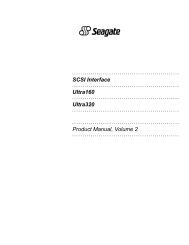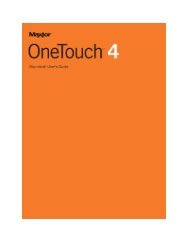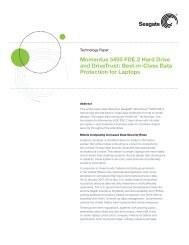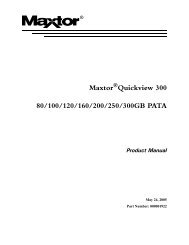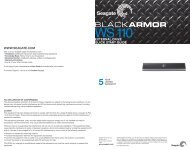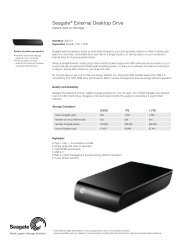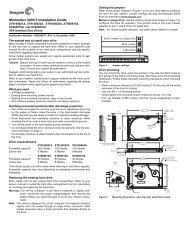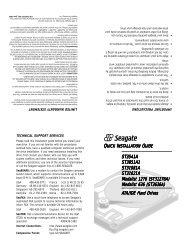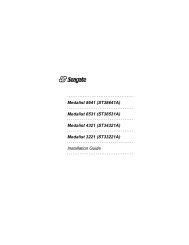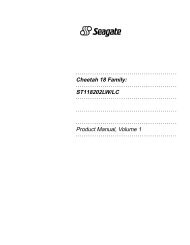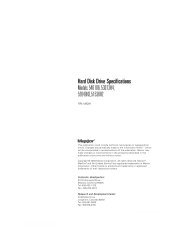Barracuda 18LP Family: ST39175LW/LC ST318275LW ... - Seagate
Barracuda 18LP Family: ST39175LW/LC ST318275LW ... - Seagate
Barracuda 18LP Family: ST39175LW/LC ST318275LW ... - Seagate
You also want an ePaper? Increase the reach of your titles
YUMPU automatically turns print PDFs into web optimized ePapers that Google loves.
54 <strong>Barracuda</strong> <strong>18LP</strong> Product Manual, Rev. E<br />
9.6.2 SCSI interface physical description<br />
The drive models described by this product manual support the physical interface requirements of the SCSI-3<br />
Parallel Interface-2 (SPI-2) and EPI standards as defined in American National Standard documents T10/<br />
1302D and X3T10/1143D, and operate compatibly at the interface with devices that only support earlier singleended<br />
SCSI-2 and SCSI-3 standards. It should be noted that this is only true if the systems engineering has<br />
been correctly done, and if earlier SCSI-2 and SCSI-3 devices respond in an acceptable manner (per applicable<br />
SCSI Standards) to reject newer SCSI-3 protocol extensions that they don’t support. Low voltage differential<br />
(LVD) circuits are not compatible with high voltage differential (HVD).<br />
The family of drives in this manual supports the single-ended and low voltage differential physical interconnects<br />
(hereafter referred to as SE and LVD, respectively) as described in the ANSI SPI-2 and EPI standards.<br />
The drives typically operate on a daisy-chain interface in which other SCSI devices are also operating. Devices<br />
on the daisy chain must all operate in the same mode, either SE or LVD, but not a mixture of these. On the<br />
interface daisy chain, all signals are common between all devices on the chain, or bus, as it is also called. This<br />
daisy chain of SCSI devices must be terminated at both ends with the proper impedance in order to operate<br />
correctly. Intermediate SCSI devices shall not be terminated. Models “<strong>LC</strong>” and “LW” have no onboard termination<br />
circuits. Some type of external termination circuits must be provided for these drives by the end user or<br />
designers of the equipment into which the drives will be integrated. See SPI-2 and EPI standards for the maximum<br />
number of devices that can successfully operate at various interface transfer rates on SE and LVD daisy<br />
chains.<br />
“<strong>LC</strong>” model drives plug into PCBA or bulkhead connectors in the Host. They may be connected in a daisy-chain<br />
by the host backplane wiring or PCBA circuit runs that have adequate DC current carrying capacity to support<br />
the number of drives plugged into the PCBA or bulkhead connectors. A single 80 pin I/O connector cable cannot<br />
support the DC current needs of several drives, so no daisy chain cables beyond the bulkhead connectors<br />
should be used. A single drive connected via a cable to a host 80 pin I/O connector is not recommended.<br />
Table 12 shows the interface transfer rates supported by the various drive models defined in this manual.<br />
Table 12:<br />
Interface transfer rates supported<br />
Interface type/<br />
drive models<br />
Maximum transfer rate<br />
Asynchronous Fast-5 Fast-10 Fast-20 Fast-40<br />
SE “<strong>LC</strong>,” “LW” yes yes yes yes no<br />
LVD “<strong>LC</strong>,” “LW” yes yes yes yes yes



